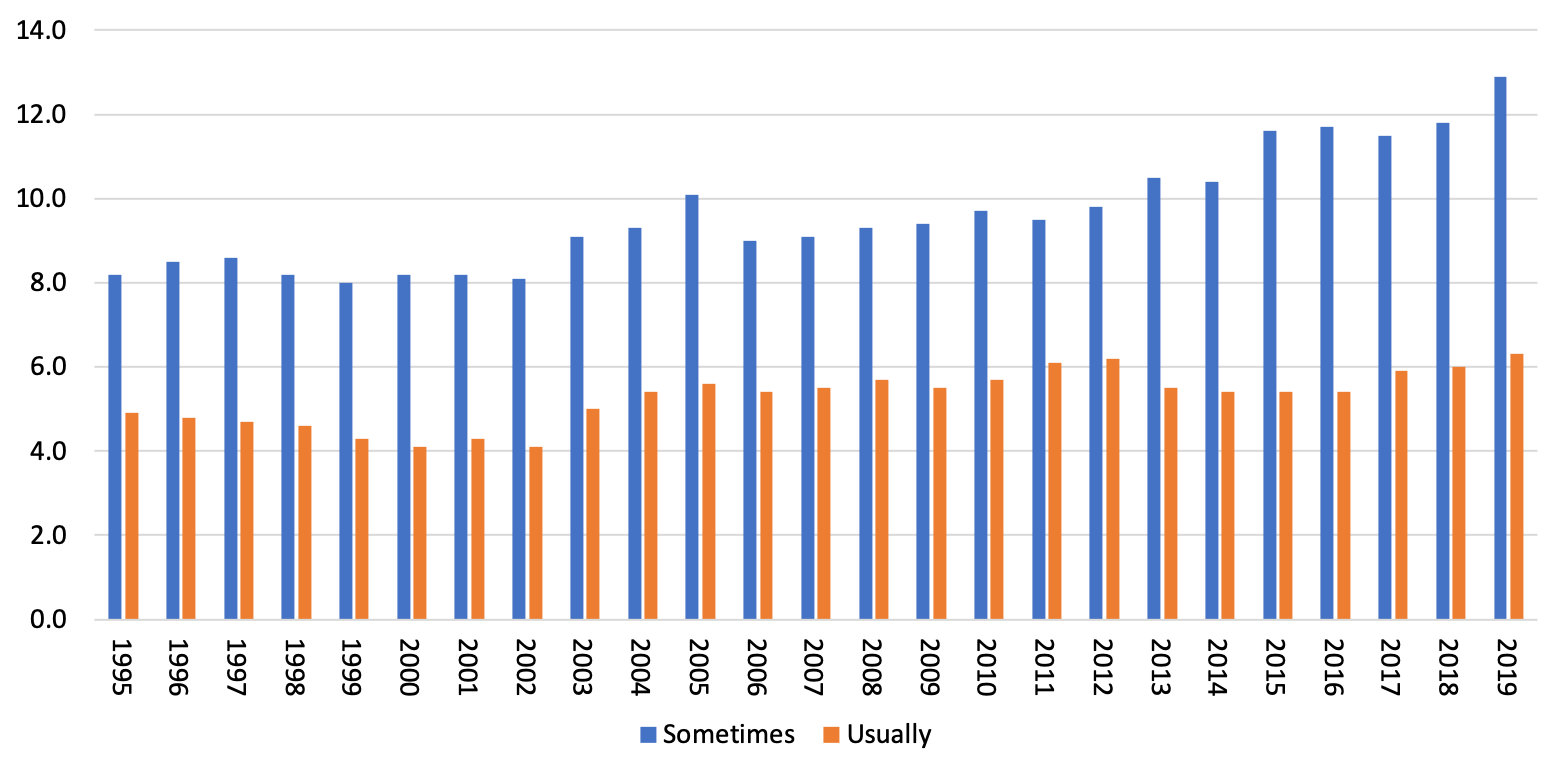Don’t Shut the (Office) Door Yet:
Why technology and work-from-home won’t displace the workplace
At the start of the COVID-19 pandemic, a radical shift occurred in the number of people working from home. Almost overnight, the majority of white-collar employees began working from their kitchen tables, garages, and home offices to comply with stay-at-home measures aimed at curbing the spread of the virus.
As the pandemic dragged on, both employers and employees grew accustomed to this arrangement, with both groups now expecting a permanent increase in work from home (WFH) after the pandemic ends.1,2
Although COVID-19 accelerated the shift to WFH, the switch has been underway for more than 30 years. From the introduction of affordable PCs in the early 1990s to the subsequent development of email, high-speed internet, smartphones, videoconferencing technology and cloud computing, widespread adoption of technological advances has allowed us to work ever more effectively at home.
Our recently conducted research3 looks at how the pervasive acceptance of technology has accelerated the transition of high-skilled workers to working from home. We also explore the productivity gains made by stay-at-home workers, and what the WFH trend means for homes, offices and municipalities.
We begin with a model that uses data from before the pandemic to estimate the elasticity of substitution between WFH and work at the office. Substitutability, in this case, refers to the degree to which work accomplished at home (largely through technology) is able to replace similar work performed within the context of the office. For example, a videoconference can readily substitute for an in-person meeting at the office.
In our model, high-skill workers choose how to allocate their time between working from home and working in the office. We measure the extent to which, in pre-pandemic times, workers from the same industries and occupations, but with different commuting times, made different choices about how frequently to work at home. The rate at which workers choose to work from home as commuting costs change is informative about how substitutable WFH is with office work.
What we find is that WFH is an imperfect substitute for work at the office. This has important implications for understanding the future of the post-pandemic workplace. If the two are not perfect substitutes, most workers in the future will continue to divide their time between home and office.
In addition, historical evidence (in this case, from the European Union [Fig. 1]) shows that the biggest increase in WFH in the years leading up to the pandemic, during which technology improved substitutability, was in the share of workers who sometimes, rather than always worked from home.

Similarly, a 2021 PwC study4 reports that most employers anticipate a post-pandemic hybrid office model in which employees work in the office between one and four days per week, rather than one in which employees can work entirely remotely or show up at the office only a few times a month.
In addition to examining the prevalence of WFH post-pandemic, we also analyzed the impact of the pandemic on WFH technology adoption and the implications for worker productivity. Our simulation studies a pre-pandemic period in which college-educated workers work from home less than one full day per week, and a post-pandemic period in which those workers double or triple their time working from home. Finally, we study the pandemic period itself — a period during which we assume office productivity fell by 50%, reflecting the impact of social distancing on productivity at the office.
The model implies that the widespread adoption of WFH technology increased the productivity of working from home relative to the productivity of working in the office by 30-50% between the onset and the end of the pandemic.
For comparison, we also simulate what might have happened if the COVID-19 pandemic had occurred in 1990, prior to the existence of many WFH technologies. In this model, workers continue to work at the office at the same rate, but office productivity drops by 50%, just as during the actual pandemic. The model suggests that, even as incomes and prices fall, working from home is not a practical alternative to working in the office in 1990, implying that the pandemic would have had more dire consequences for household income and mortality had it occurred in 1990 than it has today.
What does this mean for workers?
As we previously stated, the widespread adoption of work-at-home technology increased the productivity of working from home relative to the productivity of working in the office by 30-50% between the onset and the end of the pandemic. Because of this increase productivity, the pandemic will likely lead to higher lifetime income for white-collar workers. The dilemma is that it will also result in greater income inequality, because most non-white-collar jobs cannot be performed from home, and these workers will not be able to take advantage of productivity gains due to technology.
What does this mean for the office?
Because WFH is an imperfect substitute for working at the office, office space will not disappear. But it will need to adapt. The higher productivity of WFH and subsequent doubling of hours worked at home during the pandemic will persist as the virus becomes controllable, leading to an approximately 15-20% decline in office rents in central business districts (CBDs) in both the short and long run, if the supply of office space cannot be reduced relative to pre-pandemic levels.
In addition, the model suggests that an increase in hours worked at home will lead to a small decline in productivity at the office due to a decrease in agglomeration economies.
What does this mean for cities?
The short-run shock to productivity at the office will have long-lasting effects on city structure.
Residential rents will rise in the short term, especially in the outer suburbs, due to increased demand for home office space. As high-skill workers increasingly relocate to more distant suburbs, CBD office rents will drop, along with prices and property taxes, straining the budgets of central cities.
The net effect of increased WFH on sustainability and the environment is less clear. Although workers will commute less, thereby reducing their carbon footprint, home offices are generally less energy efficient than offices in large, well-built buildings.
In conclusion, the move to WFH may be permanent, but it will not be exclusive. The office will still be necessary for some tasks. And although the increased productivity of WFH experienced by white-collar employees through learning and adoption effects will lead to higher lifetime incomes, workers whose jobs preclude them from WFH will not reap the same benefit. Finally, the pandemic-fueled acceleration to WFH will have substantial short- and long-term impacts on housing trends, sustainability and municipal budgets.

